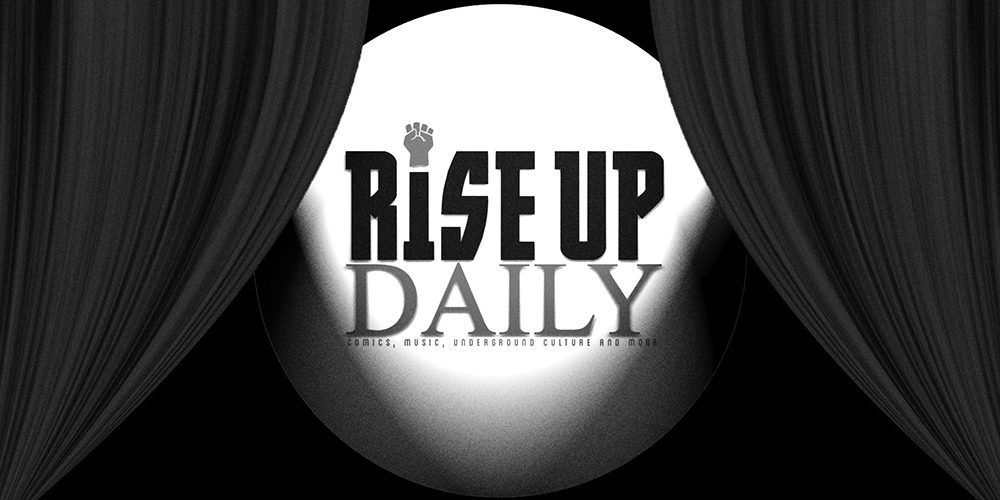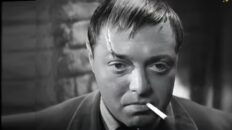I recently came under fire on Twitter for asking my fellow critics to look into expanding their knowledge of film history. There’s a simple reason for this—one cannot understand where film is going unless you know where it’s been. So much of our history as filmgoers and people can be spotlighted through cinema. Too often I’m asked, “I’d love to get into classic cinema, but where do I start?” I don’t begin to tell people they need to start with any particular canon – aka your Citizen Kane’s and Metropolises. Instead I say, “Start with what sounds interesting to you.” I can’t say that all the films on my list here are masterpieces, but they’re solid entries that should entice beginners into going further with their classic film knowledge. And if you want even more classic film recommendations, you can take a listen to my podcast, Ticklish Business.
Frankenstein (1931) and Bride of Frankenstein (1935)
I always tell people the quickest way to get into classic cinema is through horror. The scares may be dated but the stories are always compelling, particularly if they’re based on classic pieces of literature like Mary Shelley’s Frankenstein. What’s remarkable to note about these two James Whale-directed features is that the Bride of Frankenstein starts immediately where the first film left off. Why is that unique? Because in the early ‘30s there was no way to rewatch a movie, so the film is reliant on the audience knowing how the last film ended (or just not caring). Now audiences can watch both back-to-back—and take note of how characters are dropped or changed actors—but back then that was unnecessary, yet Whale still did it.
Everyone has their favorite Alfred Hitchcock film and mine is this 1946 masterpiece. Yes, I say masterpiece. Notorious is perfect in nearly every respect. It’s expertly directed. It’s expertly cast and acted. You can’t get a better Hollywood pairing—outside of Casablanca—then you can with Cary Grant and Ingrid Bergman. And, often, classic films age well and rewatching Notorious is an exercise in how well things age. Case in point, the sexiness level in this is off the charts, aided by a rule in the Hollywood Production Code that capped kisses at 10 seconds. You’ll also be drawn into how the film uses gender, showing how women are often railroaded at the command of men in power.
What people often forget about classic films is how beautiful they look, especially in Technicolor. No works represent this better than the directorial output of Emeric Powell and Michael Pressburger, better known as “The Archers.” They crafted several beautiful films looking at our obsession with beauty and perfection, as well as our conflicted feelings about the afterlife (check out A Matter of Life and Death after this). The Red Shoes is the quintessential ballerina film that everyone, including Darren Aronofsky, has borrowed from when making a dance film. The story of Victoria Page (Moira Shearer) and her unrelenting urge to dance is a beautifully rendered horror story that the audience will be enthralled by. Not only are you lured into the story, but the utterly dazzling color and sumptuous production design makes this a frightening feast for the eyes.
You can’t have a classic film marathon without a little film noir, the gritty, sexy underbelly of the classic film world. The best noirs combine sex and death, and while everyone often immediately goes towards 1944’s Double Indemnity (I recommend it!), I prefer 1946’s Gilda. For starters, everyone needs Rita Hayworth in their life. Her legendary hair toss and coy “Who me” will leave you swooning, regardless of gender. On top of all that it’s an emotionally charged drama about two people’s mutual attraction and repulsion for each other. Noirs are all about how we’re attracted to people we know are bad for us, and the relationship between Hayworth’s Gilda and Glenn Ford’s Johnny is all kinds of deliciously awful. You always hurt the ones you love, right?
Are you in the mood for a little music and some laughs? Then I have a movie that puts a song in your heart and tickles your funny bone. The Beatles may be one of the biggest bands of all time, but you might not know that they were comic cut-ups. A Hard Day’s Night inspired the likes of Austin Powers and Spice World with its blend of day-in-the-life documentary and high-concept shenanigans. The group gets a chance to lampoon their own image while simultaneously selling themselves as best buds, hilarious actors, and rock messiahs. You’ll be quoting this one for years!
Gimme Shelter isn’t just one of the best movies about music; it’s the best documentary in general. The story of the Rolling Stones’ notorious concert at the Altamont Speedway that resulted in the death of a young man by the Hell’s Angels is depicted from start to finish. The audience sees the Stones working on a massive arena tour, suffering difficulties that ultimately force them to use the ill-prepared Altamont. The concert itself is later shown as is the murder of Meredith Hunter. You’re not only seeing the problems that make concert touring such a pain in the ass, but you also witness a band who realize their fame has negative effects. Watching Mick Jagger look at the footage of Hunter’s death holds the same weight as him listening to a rough cut of “Wild Horses.” The tone remains one of stoicism but where does that come from? It’s sad the ‘60s free love of Woodstock died at Altamont and if you’re a fan of musical history—or good music in general—this is right up your alley.
If you want a crash course in film history coupled with the greatest musical of all time that honors where Hollywood is going then you need to watch Singin’ in the Rain. The story of a hoofer turned Hollywood icon (played by Gene Kelly), and his attempts to save his career, has been the inspiration for numerous movies. Kelly, Donald O’Connor and Debbie Reynolds are phenomenal but the film belongs to Jean Hagen as squeaky-voiced movie queen, Lina Lamont. Every scene with Hagen is comedy gold! I don’t want to spoil anymore for you so just go out and watch it!
Do you love Todd Haynes? If you do then you need to go back and look at the director’s primary source of inspiration: director Douglas Sirk. Sirk was best known for his operatic melodramas that Haynes referred to when he crafted works like Carol and Far From Heaven. The best Sirkian melodrama is Written on the Wind, a film that combines all of Sirk’s tropes. The story involves a vaguely incestuous oil family where the head son (played by Robert Stack) suffers from impotence—only to be confronted with a litany of phallic objects throughout—while being in a homoerotically charged “friendship” with a character played by Rock Hudson. You also have Lauren Bacall and the recently lost Dorothy Malone whose character is so wild and free she actually kills a man with a rumba. (It’s a scene that needs to be seen to be believed.)
It’s frustrating to hear people say classic cinema had skewed depictions of women. Some of the most feminist features came out during the studio era and Val Lewton’s horror feature, Cat People is one of ‘em. Cat People follows a Serbian immigrant (played the luminous Simone Simon) who believes any physical affection between her and her husband will leave her a cat person. The film can be dissected for all manner of contexts whether it be historical, feminist, sexual. I can rewatch this movie and still find something new to deconstruct.
Red Dust (1932)
Who says classic films can’t be sexy? In fact, the inability to show sex only compelled directors and writers to become more creative, such is the case with Red Dust. Red Dust has two of the sexiest people you could find in 1932, blonde bombshell Jean Harlow and Clark Gable. The two are trapped on a swampy rubber plantation; he’s the plantation overseer and she’s a prostitute. Harlow’s Vantine is sweet in spite of her profession, and her chemistry with Gable is off the charts. The touching between the two is electric and the movie makes no bones about the fact that these two are sleeping together, even if it’s not seen. The arrival of a sophisticated society girl played by Mary Astor complicates their romance. It’s a sweaty, complex romance that’s all about the sexuality without the sex.









